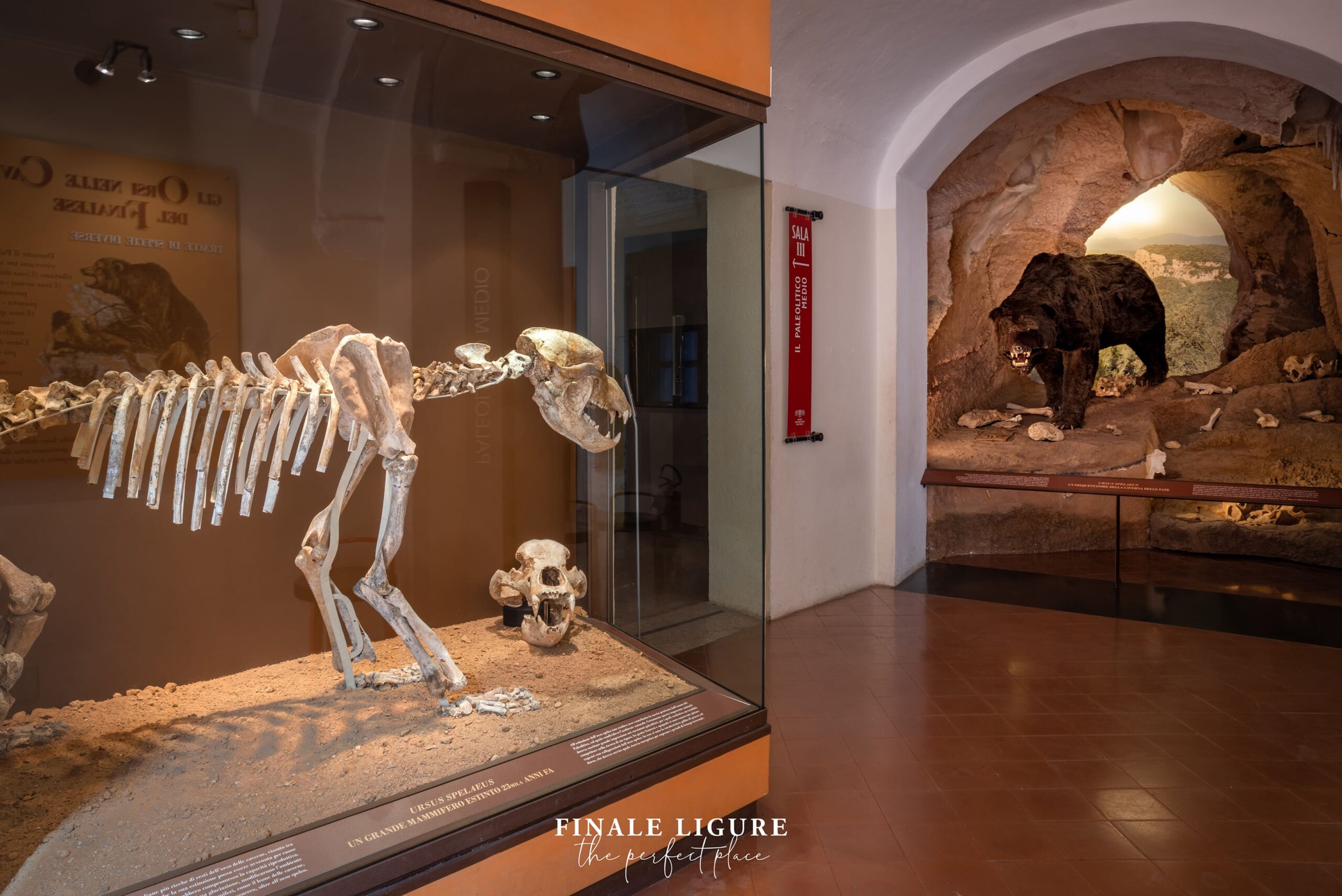

350,000 YEARS OF HISTORY
A land that tells human history
The presence of many karstic caves has made the Finale area one of the main reference points for international prehistoric archaeology specifically interested in the origin of humanity.
Archaeological sites have yielded many artifacts that track the evolution of stone-chipping techniques. These techniques produced increasingly refined tools essential for hunting and daily activities.



These testimonies are currently exhibited at Archaeological Museum of Finale in Finalborgo. The story showcased in the museum halls dates back about 350,000 years ago , when humans used stone tools and travelled to the Mànie Plateau during the Lower Paleolithic era.
Throughout various climatic changes, including glacial phases and warm periods, three distinct human species inhabited this region: Homo Heidelbergensis, Homo Neanderthalensis and Homo sapiens, the human species we belong to.
Researchers discovered the skeletal remains of Neanderthal adults and children, dating back to approximately 70,000 years ago, in the Caverna delle Fate .
The Caverna delle Arene Candide, which overlooks the sea and derives its name from a large white sand dune that was once formed at its base by the wind, is a remarkable sanctuary of European prehistory.
A remarkable find in the region was the burial of a young prince, nicknamed “Giovane Principe” (“The Prince of Arene Candide”). He was a 15-year-old hunter who passed away 28,000 years ago due to a severe injury. His burial site was adorned with precious treasures.

It is, therefore, a thousand-year history, leading all the way back to the last Mesolithic hunters.
About 8,000 years back, Neolithic farmers-breeders arrived on the shore of Finale from the sea, sparking a significant revolution in agriculture and animal husbandry. These newcomers quickly expanded and established a dense network of settlements, both in caves and in open areas, throughout the territory.

More information about Arene Candide
www.mudifinale.com
Museo Archeologico del Finale (Archaeological Museum of Finale)
Chiostri di Santa Caterina
Finalborgo


